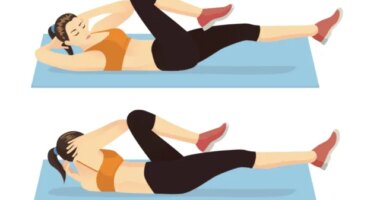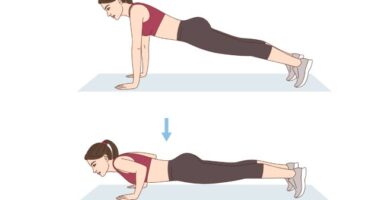
Here is what may happen inside your body when you walk 7,000 steps daily while suffering from hypertension.
In a recent study, experts have stated that walking 7,000 steps every day can help older adults reduce their high blood pressure levels – a key risk factor for heart failure, heart attacks, and stroke. The study, published in the Journal of Cardiovascular Development and Disease, sought to determine if older adults who are suffering from hypertension could receive these benefits by moderately increasing their daily walking or indulging in brisk walking daily.
In the study, researchers found that when exercise is combined with medication, the results in managing the patient high blood pressure levels became much easier.
Hypertension: Understanding How The Silent Killer Harms Your Body
High blood pressure, sometimes referred to as hypertension, is a common medical condition in which the blood presses too hard against the arterial walls. This can clog the arteries over time, causing major health issues like kidney failure, eyesight loss, heart disease, and stroke.
How Hypertension Harms Your Body
Hypertension can damage your body in a number of ways. The arteries may become weaker and more prone to rupture first. As a result, a heart attack or stroke may occur. Second, high blood pressure can harm the kidneys and cause renal failure. Thirdly, retinal damage brought on by hypertension may impair vision.
Symptoms of Hypertension
High blood pressure, aka hypertension, is often called the “silent killer” because it comes with zero to mild symptoms. This means that people who are suffering from high blood pressure may not know they have it until they experience serious health problems. However, some people with hypertension may experience the following symptoms:
- Headaches
- Nosebleeds
- Shortness of breath
- Fatigue
- Chest pain
- Dizziness
- Vision changes
How To Control Hypertension?
Hypertension is a result of your lifestyle choices and habits. This means you can control or manage the condition and its symptoms by making some easy and effective changes in your daily routine. Some of the most effective changes that can help you manage your blood pressure are – exercising, eating healthy, avoiding alcohol and smoking, etc. In this article, we will discuss how exercising affects your hypertension symptoms, and what exercise works better when it comes to managing the condition.
Can Walking Help Manage Hypertension?
One of the best exercises that one must include in their daily routine is walking. Yes, you read that right! walking is a great form of exercise for hypertension patients. It is low-impact, easy to do, and can be done almost anywhere. As the study stated — walking 7,000 steps every day is a good goal for most people, but it is important to start slowly and gradually increase your step count as you get fitter. Let’s dig out some of the best things that walking 7,000 steps daily can do to your body when you are suffering from high blood pressure.
Here are some of the benefits of walking for hypertension patients
Reduced Blood Pressure
Walking improves circulation and strengthens the heart, both of which serve to reduce blood pressure. Additionally, it aids in blood vessel expansion and enhances blood vessel performance.
Improved Cholesterol Levels
Walking can help to improve cholesterol levels by raising HDL (good) cholesterol and lowering LDL (bad) cholesterol. Therefore, one must add walking to their daily routine to keep their heart safe from the complications caused by high blood pressure.
Reduced Risk of Heart Disease
Walking lowers blood pressure, raises cholesterol levels, and strengthens the heart, all of which contribute to minimizing the risk of heart disease.
Reduced Risk of Stroke
Walking lowers blood pressure, raises cholesterol, and reduces inflammation, all of which minimize the risk of stroke.
Improved Blood Sugar Control
Walking 7,000 steps daily in the morning or during the sunset can help to improve blood sugar control by increasing insulin sensitivity. Anybody who is suffering from high blood pressure and is at risk of diabetes must add this one habit to their daily routine.
READ RELATED: Trader Joe's Most Popular Frozen Meal Has Plummeted In Quality, Customers Say
Aids In Weight Loss
Walking is also one of the most effective ways to shed weight. Yes, you read that right! If you want to lose weight or maintain a healthy weight, try to walk at least 7,000 steps daily. This is important for hypertension patients, as obesity is a major risk factor for high blood pressure.
Improved Mood
Suffering from constant mood swings? Try to walk at least 2 times a day and finish the 7,000 steps challenge. Walking can help to improve mood and reduce stress. This is because walking releases endorphins, which have mood-boosting effects.
Reduced Stress
Walking is also great for managing your stress levels. How? Walking can help to reduce stress levels by increasing physical activity and reducing the production of stress hormones.
Increased Energy Levels
Walking can help to increase energy levels by improving circulation and cardiovascular health.
Improved Sleep Quality
Try to walk daily if you are suffering from sleeping issues. Not giving your body enough rest and sleep can have severe health consequences. Walking can help to improve sleep quality by reducing stress levels and promoting relaxation.
Along with these additional advantages, taking 7,000 steps per day can specifically help hypertension patients lower their blood pressure. According to research in the American Family Physician, walking for 15 weeks at a rate of 150 minutes per week (about 30 minutes per day) reduced blood pressure by 4/2 mmHg. Walking 10,000 steps per day reduced blood pressure by 5.5/3.8 mmHg, according to a different study that was published in the journal Hypertension.
It’s crucial to see your doctor before beginning any new workout regimen if you have hypertension. You can set a safe and practical walking objective with the assistance of your doctor.
Here are some tips for getting started with walking:
- As you get fitter, increase your step count gradually and start out slowly.
- Spend at least 30 minutes each day, five days a week, walking.
- If necessary, divide your walking into shorter sessions.
- Select a pleasant and safe walking route.
- Don’t forget to dress and wear comfortably.
- Before, during, and after your stroll, make sure to drink enough water.
- Walking is a fantastic strategy to enhance your general health and lower your risk of chronic conditions like hypertension. To take advantage of all the advantages of walking, try to complete 7,000 steps each day if you are able.
Disclaimer: The home remedies given above are just some suggestions and tips to manage the condition. Do not ignore the symptoms if they persist for a long time. Make sure you consult a doctor before making any changes to your diet.
Total Wellness is now just a click away.
Follow us on
Don’t Miss Out on the Latest Updates.
Subscribe to Our Newsletter Today!
window.addEventListener(‘load’, (event) => {
$(‘#commentbtn’).on(“click”,function(){
(function(d, s, id) { var js, fjs = d.getElementsByTagName(s)[0]; if (d.getElementById(id)) return; js = d.createElement(s); js.id = id; js.src = “//connect.facebook.net/en_US/sdk.js#xfbml=1&version=v2.3”; fjs.parentNode.insertBefore(js, fjs);}(document, ‘script’, ‘facebook-jssdk’));
$(“.cmntbox”).toggle();
});
});









